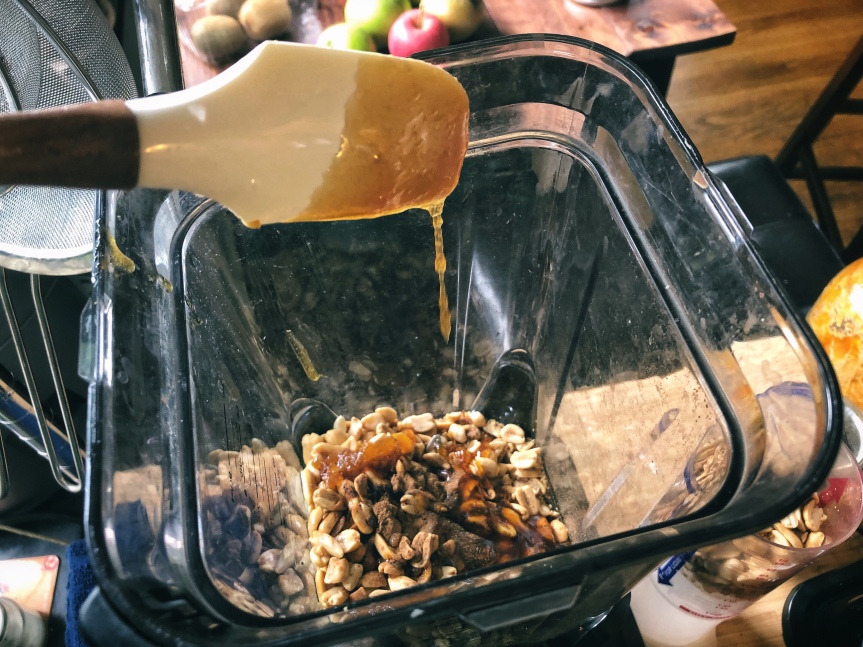Peanut butter is a grad student’s best friend. Raise your hand if you’ve got a big ol’ jar of it at your desk. Raise the other if you’ve ever eaten it straight out of the jar with a spoon (or your hand, Winnie the Pooh style, we don’t judge). It’s there when we’re stressed. It’s there when we need a bit of extra fuel. It’s especially there when we’ve got an apple that needs a nice glob of PB on every bite. Peanut butter definitely deserves a shout out in my thesis acknowledgements.
Peanut butter as it’s meant to be is quite healthy (low cabs, high healthy fats, etc). It can become problematic when companies add sugar, excessive sodium, full or partially hydrogenated oils, or even non-hydrogenated oils like palm oil. It’s also often packaged in plastic. As part of my efforts to live a healthier lifestyle for me and our planet, I started searching for products that had limited ingredients and came packaged in glass. You may have guessed these were a bit more expensive! The game changer for my husband and I came with the purchase of a new, mondo-powerful blender! We’d tried making our own peanut butter before and nearly destroyed our hand-me-down blender.

But now there’s no holding us back. Our homemade peanut butter is way more delicious than store-bought. We find the ingredients in bulk and in glass so there’s no plastic waste. If you’d like to try and make your own you can follow the general recipe below. Get creative! Let us know how it goes!
Continue reading “Eco-Inspirations: Homemade Peanut Butter”



